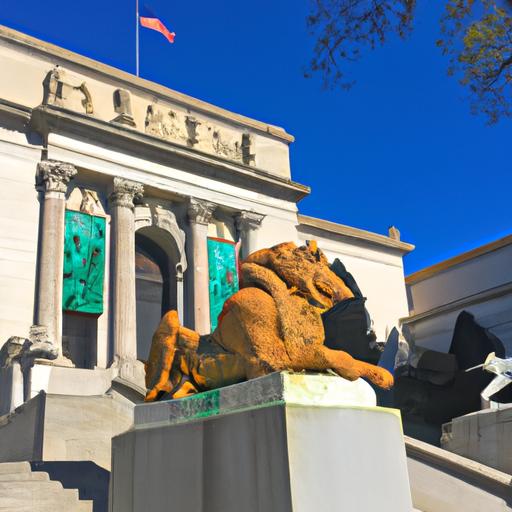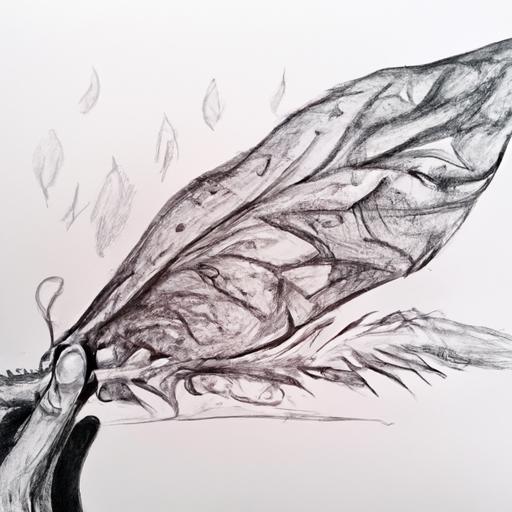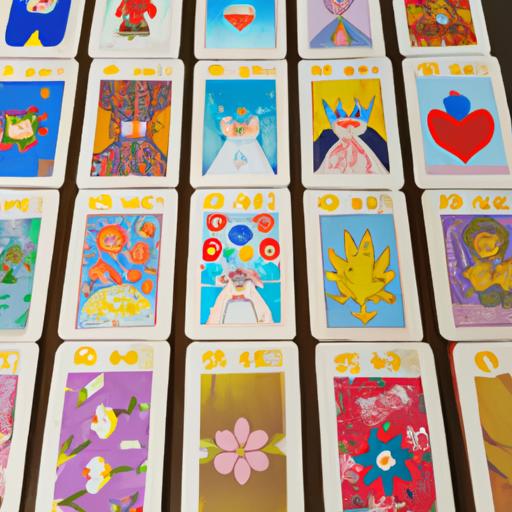When we think of martial arts, images of intense combat and self-defense may come to mind. On the other hand, performing arts evoke thoughts of expressive movements and captivating stage performances. But have you ever wondered if martial arts can also be considered a form of performing art? Let’s delve into this intriguing question and explore the fascinating connection between martial arts and performing arts.
To begin, let’s define what martial arts and performing arts entail. Martial arts encompass various disciplined practices that focus on combat techniques and self-defense. It involves physical movements, stances, and techniques that require skill and precision. On the other hand, performing arts encompass creative expressions through physical movements, storytelling, and emotions. It encompasses disciplines like dance, theater, and music, where performers use their bodies to convey powerful narratives.
While martial arts may appear to be purely physical and combat-oriented, there is an undeniable overlap with performing arts. Both disciplines require discipline, dedication, and a deep understanding of the body’s mechanics. Martial artists must master precise techniques and stances, much like performers in dance or theater. The artistic aspect of martial arts is evident in forms and choreography, where practitioners showcase their skills through beautifully executed movements and sequences.
Moreover, martial arts demonstrations and competitions often have a performative nature. Whether it’s a captivating taekwondo demonstration or a high-energy Brazilian jiu-jitsu match, martial artists showcase their skills to captivate and entertain audiences. They engage in a unique blend of physical prowess and artistic expression, making martial arts a truly captivating form of performing art.
Understanding the connection between martial arts and performing arts is essential for appreciating the depth and significance of both disciplines. Recognizing martial arts as a form of performing art allows us to approach it with a fresh perspective, highlighting the artistic elements inherent in combat and self-defense. It also opens doors for creative collaborations, where martial artists can collaborate with dancers, actors, and musicians to create mesmerizing performances that blend the power of martial arts with the beauty of performing arts.
In conclusion, martial arts and performing arts share a profound connection. While martial arts excel in combat and self-defense, they also possess artistic qualities that make them a form of performing arts. By understanding this connection, we can appreciate the artistic expressions within martial arts and explore the possibilities of collaboration between these two captivating disciplines. So, the next time you witness a martial arts performance, remember that it is not just a display of physical skill, but a captivating expression of performing arts.
Martial Arts: The Physical Aspect
Exploring the Essence of Martial Arts
Martial arts, at its core, is a dynamic and intricate discipline that encompasses combat techniques and self-defense. It is a physical practice that requires dedication, discipline, and a deep understanding of the body’s mechanics. By delving into the essence of martial arts, we can appreciate its significance as a form of self-expression and personal growth.
Unveiling the Techniques, Stances, and Movements
Within martial arts, practitioners engage in a wide array of physical techniques, stances, and movements. These elements form the foundation of martial arts training and enable practitioners to effectively defend themselves, while also fostering physical strength, agility, and coordination. From punches and kicks to throws and joint locks, martial artists develop a repertoire of techniques that can be executed with precision and speed.
Stances play a crucial role in martial arts, providing a solid foundation for balance, power, and stability. Whether it’s the wide and grounded horse stance of kung fu or the fluid and dynamic cat stance of karate, each martial art style emphasizes specific stances that enhance technique execution and body control.
Movements within martial arts encompass a broad spectrum, from swift and explosive strikes to fluid and graceful transitions. Martial artists cultivate the ability to seamlessly flow from one movement to another, combining power, speed, and precision. These movements not only contribute to combat effectiveness but also serve as an artistic expression of the practitioner’s skill and mastery.
Embracing the Diversity of Martial Arts Styles
Martial arts is a vast and diverse realm, encompassing a multitude of styles originating from various cultures and regions. Each style carries its unique characteristics, philosophies, and training methods. Examples of popular martial arts styles include the striking-focused art of Muay Thai, the grappling-based discipline of Brazilian Jiu-Jitsu, and the harmonious and circular movements of Tai Ch
By exploring the diversity of martial arts styles, we gain a deeper appreciation for the intricacies and nuances embedded within each discipline. From the explosive power of Taekwondo’s high kicks to the elegant and precise movements of Wing Chun, each style offers a distinct flavor and approach to martial arts.
In summary, martial arts is a physical endeavor that encompasses combat techniques, stances, and movements. It serves as a means of self-defense and personal growth, with practitioners dedicating themselves to refining their physical abilities. By understanding the physical aspect of martial arts, we can fully grasp the depth and richness of this captivating discipline.
Performing Arts: The Expressive Aspect
Definition of Performing Arts and its Emphasis on Creative Expression
Performing arts, as the name suggests, revolves around creative expression through various art forms. It encompasses disciplines such as dance, theater, music, and more, where performers use their bodies, voices, and instruments to convey emotions, tell stories, and captivate audiences. Unlike visual arts that focus on static creations, performing arts come alive in the moment, creating a dynamic and immersive experience for both performers and spectators.
Various Performing Arts Disciplines
Within the realm of performing arts, there is a vast array of disciplines that allow individuals to explore different avenues of expression. Dance, for example, utilizes intricate movements, body language, and rhythm to communicate emotions and narratives. From ballet to hip-hop, each dance style has its unique language and techniques that convey distinct messages.
Theater, on the other hand, combines acting, stagecraft, and storytelling to transport audiences into different worlds. Whether it’s a tragedy, comedy, or musical, theater enables performers to embody characters, evoke emotions, and engage viewers in a shared experience. Music, yet another performing art, harnesses the power of melody, harmony, and rhythm to evoke emotions and express ideas beyond words.
The Importance of Emotions, Storytelling, and Stage Presence
Emotions lie at the heart of performing arts. They bring authenticity, depth, and connection to performances. Whether it’s the vulnerability displayed by a dancer, the raw emotion portrayed by an actor, or the soul-stirring melodies produced by a musician, emotions are the key to resonating with audiences on a profound level.
Storytelling is another crucial aspect of performing arts. Through narratives, performers can convey powerful messages, explore societal issues, and ignite imaginations. Whether it’s a choreographed dance piece, a theatrical production, or a musical composition, storytelling breathes life into performances, allowing audiences to embark on transformative journeys.
Stage presence is the final ingredient that elevates performing arts. It refers to the ability of performers to command the stage, captivate viewers, and create a lasting impact. It involves the charisma, confidence, and connection established with the audience. A performer with strong stage presence can enrapture spectators, drawing them into the performance and leaving a lasting impression.
In conclusion, performing arts encompass various disciplines that emphasize creative expression, emotions, storytelling, and stage presence. Dance, theater, music, and other performing arts disciplines offer unique avenues for individuals to convey their ideas, evoke emotions, and create transformative experiences for both performers and audiences. By understanding the expressive aspect of performing arts, we can appreciate the parallel qualities found in martial arts and further explore the captivating connection between the two.
Overlapping Elements of Martial Arts and Performing Arts
A. Physicality and Discipline: A Shared Foundation
When examining martial arts and performing arts, one cannot overlook the striking commonalities in terms of physicality and discipline. Both disciplines require rigorous training, honing the body’s abilities, and pushing the boundaries of what is physically possible. Whether it’s a martial artist perfecting their technique or a dancer refining their movement, the pursuit of mastery demands dedication, perseverance, and a deep understanding of one’s body.
The physicality in both martial arts and performing arts involves meticulous control over body movements, balance, and coordination. Whether executing a powerful kick or performing an elegant pirouette, practitioners must harness their physical capabilities with precision. This shared focus on physicality fosters discipline, as both martial artists and performers meticulously refine their techniques through repetitive practice and constant refinement.
B. Artistic Aspects: Beauty in Martial Arts
While martial arts may be primarily associated with combat and self-defense, there is a surprising artistic dimension within these disciplines. Forms, also known as katas or patterns, are a prime example of the artistic aspects within martial arts. These choreographed sequences of movements showcase the practitioner’s skill, precision, and fluidity, resembling a carefully crafted dance. From the graceful movements of Tai Chi to the explosive strikes of Kung Fu, martial arts forms embody a captivating blend of technique and aesthetics.
Furthermore, the choreography employed in martial arts performances demonstrates the artistic prowess of practitioners. Just like dancers or actors, martial artists carefully plan and execute their movements, creating visually stunning sequences that captivate audiences. The coordination and synchronization required in group demonstrations highlight the collaborative nature of martial arts as a performing art, where practitioners come together to create mesmerizing displays of skill and artistry.
C. Performative Nature: Martial Arts as a Spectacle
Martial arts demonstrations and competitions inherently possess a performative nature. When martial artists step onto the stage or into the ring, they enter a realm where their skills are not only tested but also showcased for an audience. These events are more than just displays of physical prowess; they are captivating spectacles that merge athleticism, artistry, and entertainment.
Whether it’s a traditional martial arts demonstration or a modern mixed martial arts bout, practitioners engage in a performative act that aims to captivate and engage the audience. The theatrical presentation, the palpable energy, and the awe-inspiring techniques create an immersive experience, drawing spectators into the world of martial arts. These performances allow practitioners to express themselves, tell stories through their movements, and invoke emotions in the viewers, much like the objectives of performing arts.
In conclusion, the overlapping elements between martial arts and performing arts are striking. Both disciplines share a foundation of physicality and discipline, emphasizing the importance of honing the body’s abilities through rigorous training. Moreover, martial arts possess artistic aspects, evident in forms and choreography, which showcase the beauty and creativity within these disciplines. Lastly, the performative nature of martial arts demonstrations and competitions solidifies its place as a form of performing art, captivating audiences and evoking emotions. Understanding these overlapping elements allows us to appreciate the multifaceted nature of martial arts and its harmonious connection with performing arts.
Martial Arts as a Performing Art
Argument for Martial Arts as Performing Art
When we think of performing arts, we often envision dancers gracefully moving across a stage or actors captivating us with their emotive performances. However, martial arts can also be classified as a form of performing art. Just like other performing arts disciplines, martial arts require skill, creativity, and a captivating presence. The fusion of physicality, technique, and artistry in martial arts performances makes a compelling case for its classification as a performing art.
Analysis of Martial Arts Performances as Artistic Expressions
Martial arts performances are not just displays of physical prowess; they are artistic expressions that convey emotions, narratives, and cultural traditions. Through precise movements, practitioners communicate stories, themes, and philosophical concepts. The execution of techniques becomes a medium for creative expression, allowing martial artists to exhibit their individual style and interpretation. From the fluidity of tai chi to the explosive power of capoeira, martial arts performances captivate audiences with their artistic depth and beauty.
The artistic elements within martial arts performances extend beyond mere technique. Choreography plays a crucial role in creating visually stunning sequences that engage and mesmerize spectators. The synchronization of movements, use of space, and dynamic transitions contribute to the overall aesthetic appeal of the performance. Additionally, the incorporation of music, costumes, and props further enhances the artistic experience, creating a multisensory journey for both the performers and the audience.
Examples of Martial Arts Performances in Various Cultural Contexts
Martial arts performances are not limited to a single cultural context; they have flourished in diverse societies around the world. From the graceful movements of Chinese wushu to the disciplined forms of Japanese karate, each martial arts style carries its own cultural significance and artistic expression. Traditional martial arts demonstrations, such as the Korean Taekkyeon or the Thai Muay Thai, showcase the rich heritage and deep-rooted traditions of their respective countries. Meanwhile, contemporary martial arts performances fuse traditional techniques with modern influences, creating innovative and dynamic displays of artistic expression.
In conclusion, martial arts can undoubtedly be classified as a form of performing art. The combination of physicality, technique, and artistic expression in martial arts performances showcases the creativity and skill of practitioners. By recognizing martial arts as a performing art, we gain a deeper understanding and appreciation for the beauty, cultural significance, and artistic depth within this discipline. So, the next time you witness a martial arts performance, take a moment to recognize the artistry behind the movements and the profound expressions it conveys.
Conclusion
In conclusion, the fusion of martial arts and performing arts unveils a captivating world where physicality, discipline, and artistic expression intertwine. While martial arts traditionally focus on combat and self-defense, they possess inherent qualities that make them a form of performing arts. The precise techniques, choreographed forms, and captivating demonstrations showcase the artistic prowess of martial artists.
Understanding the connection between martial arts and performing arts allows us to appreciate the depth and significance of both disciplines. It sheds light on the artistic elements within martial arts and encourages us to explore the possibilities of collaboration between martial artists and performers from other disciplines. By recognizing martial arts as a form of performing art, we can break down barriers and foster creative partnerships that result in breathtaking performances.
As we delve deeper into the world of martial arts and performing arts, we witness the power of storytelling, emotions, and stage presence. Whether it’s a mesmerizing dance routine, a theatrical martial arts performance, or a musical composition inspired by martial arts, the possibilities for artistic expression are truly limitless. The connection between martial arts and performing arts expands our horizons, inviting us to explore the depths of human creativity and physicality.
So, the next time you witness a martial arts performance, remember that it is not just a display of physical skill, but a captivating expression of performing arts. Let us embrace the artistic qualities of martial arts and celebrate the beauty of movement, storytelling, and the transformative power of performance. By recognizing and cherishing this connection, we can enrich our understanding of both martial arts and performing arts, and embark on a journey of exploration and appreciation.





